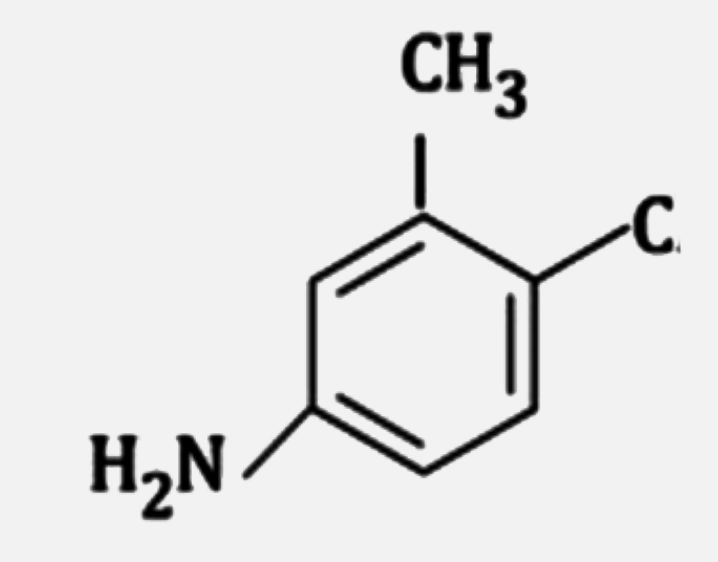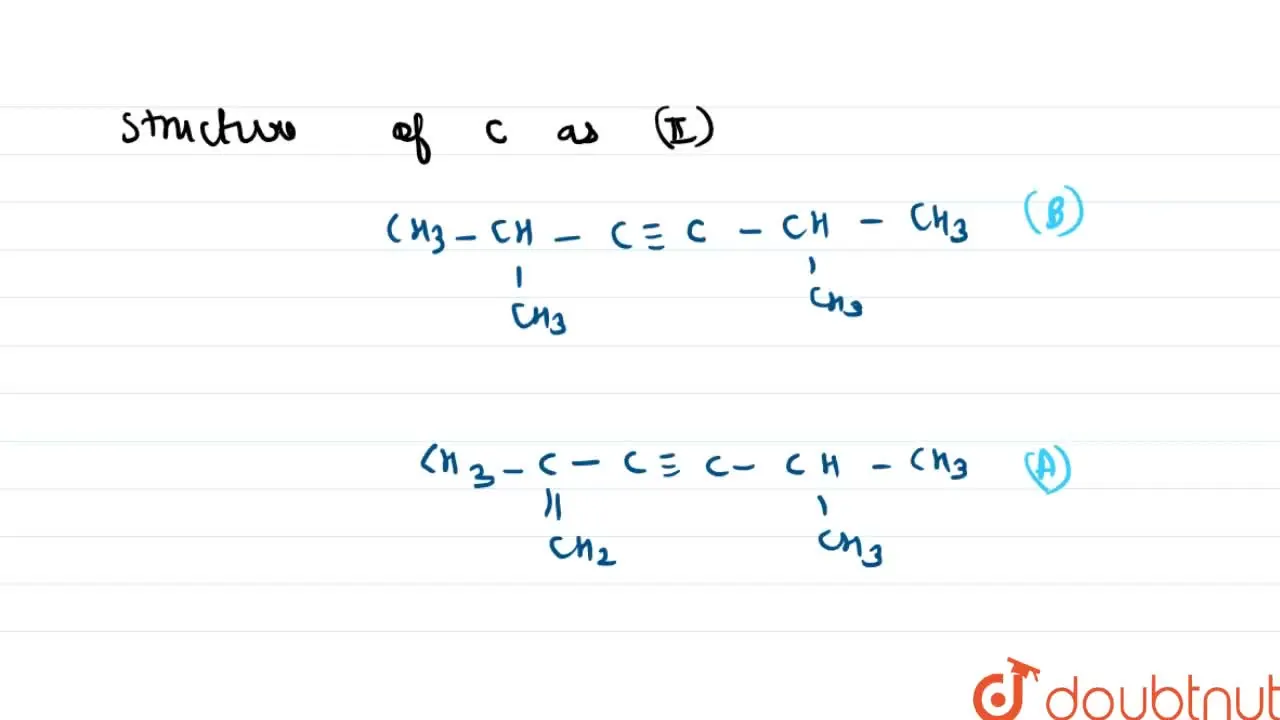Identify the compound (A),(B), and (C).
Compound (A) (C8H12)1mol−−−−−→ofH2/Pd(B)(C8H14)
Doesn not showstereoismerism⏐↓O3/Ph3PSymmetrical diketone(C)(C8H12O2)
D.U. in (A)=(2nC+2)−nH2=(2×8+2)−122=3∘
D.U. in (B)=(2nC+2)−nH2=(2×8+2)−142=2∘
D.U. in (C)=(2×8+2)−122=3∘
In compound (C),D.U.=3∘
2 D.U. is due to diketone.
So, 1 D.U. in compount (C)is due to either one (C=C) bond or one ring of eight C atoms.
One (C=C) bond is not possible because after ozonolysis of (A), the double bond cannot be left behind.
So (C) is 8C ring with two groups at the sysmmetrical position.

Related Playlists
- BOOK - CENGAGE CHEMISTRY ENGLISHCHAPTER - ALKENES AND ALKADIENESEXERCISE - SOLVED Example62videos
ALKENES AND ALKADIENES
- BOOK - CENGAGE CHEMISTRY ENGLISHCHAPTER - ALKENES AND ALKADIENESEXERCISE - EXERCISES29videos
ALKENES AND ALKADIENES
- BOOK - CENGAGE CHEMISTRY ENGLISHCHAPTER - ALKANES AND CYCLOALKANESEXERCISE - Archives13videos
ALKANES AND CYCLOALKANES
- BOOK - CENGAGE CHEMISTRY ENGLISHCHAPTER - ALKYNESEXERCISE - Exercises (Archives - Analytical and Desriptive Type)4videos
ALKYNES
Similar Questions
Identify the compounds A, B and C :
(i) C6H5COOHPCl5−−→AH2−Pd/BaSO4−−−−−−−−−→BKCN alc−−−−→distilC
(ii) H−C≡C−HH2O−−−−−−−−−−−−−→ dil H2SO4+HgSO4AH2−−→NiB140∘C−−−−−−→concH2SO4CView SolutionIdentify the compounds A, B and C:
C6H5COOHPCl5−−→AH2−pd/BaSO4−−−−−−−−−→BKCNalc−−−−→DistilledCView SolutionIdentify 'M' in the following sequence of reactions
C8H6Cl2O(M)NH3−−→C8H8ClNOBr2−−−→NaOH View Solution
View SolutionIdentify the compounds A, B and C:
H−C≡C−HH2O−−−−−−−−−−−→dil.H2SO4+HgSO4AH2−−→[Ni]B140∘C−−−−−−−→cons H2SO4CView SolutionMeCH(A)=O+H2NOH(B)HCOONa−−−−−→Δ(C)+H2O Product (C ) is:
View Solution(A)(C4H8O)H3O⊕−−−→(B)CrO3−−−−−→acetic acid(C)CH2N2−−−→Δ(D)
The compound 'D' isView SolutionIdentify the compound C in the following sequence:
(CH3)2CHCH2C≡NHCl,H2O−−−−−→compound A1.LiAlH4−−−−−→2.H2Ocompound BPC−−−−→CH2Cl2Compound CView SolutionIdentify (A), (B) and (C ).
(A),(B),(C),Isomeric alkene(C5H10)H2+Pt−−−−→2-Methyl butane
(A) and (B) Oxymercuration−−−−−−−−−→demercuration(O.M.D.) Same 3∘ alcohol
(B) and (C) Hydroboration−−−−−−−−→oxidation(H.B.O.) Different 1∘ alcoholView SolutionCompounds (A) and (C ) in the following reactions are
CH3CHO(i)CH3MgBr−−−−−−−−→(ii)H2O(A)H2SO4,Δ−−−−−−→(B)Hydroboration oxidation−−−−−−−−−−−−−−→(C)View SolutionGive the structure of the compounds in the following reactions
CH2=CH−CH2OHCrO3.2C5H5N−−−−−−−−→CH2Cl2[A]CH3OH−−−−→H+[B]C5H10O2KMnO4/OH−−−−−−−−−−→(Cold,dil)[C](C5H12O4)H3O+−−−→[D](C3H6O3)View Solution


